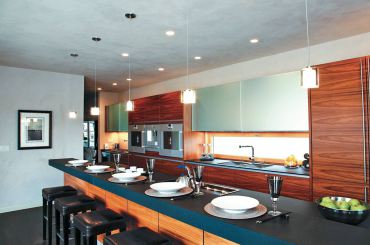
Light, be it natural or artificial, impacts productivity, safety, moods, as well as the sense of aesthetics. You can design a beautiful home or landscaped yard but if it is not properly illuminated, it may all be for not. The following is an overview of basic lighting design, types of fixtures and the different types of light bulbs available today.
Lighting Design
There are three primary types of lighting to include in most any room: general, task and accent. General lighting allows a person to navigate a space and perform general activities such as putting away groceries. Fixtures commonly used for general lighting include semi-flush and flush-mounted ceiling fixtures and wall sconces.
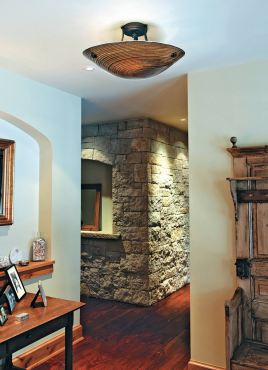
Task lighting is typically high-illumination lighting for performing specific tasks such as meal preparation, shaving, desk work or cleaning. A variety of fixtures can be used for task lighting, including under-cabinet lighting, recessed can lights (over countertops, assuming the ceiling is no more than 9 feet high), pendants and chandeliers (over tables and counters) or table and floor lamps for reading.
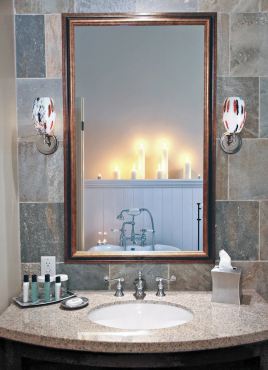
Accent lighting is used to highlight or spotlight specific objects such as art, collectibles or architectural details. A variety of fixtures can be used to achieve this, including track lights, rail lighting, recessed eye balls, ribbon and mono-point fixtures.
Similar to your fall and spring Northwest attire, lighting should be designed in layers so that rooms incorporate general, task and accent lighting (each switched separately). This allows the occupants to “put on” or “take off” light fixtures to suit both their moods and their activities.
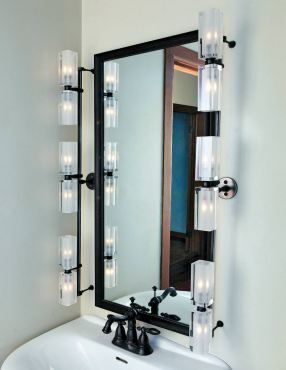
Once you have decided on the requisite types of lighting to incorporate in a room, it is time to select the types of fixtures that will be installed. The basic categories for fixtures are:
• Ceiling mounted: Fixtures are mounted in the ceiling such as a recessed can light, flush to the ceiling or semi-flush mounted to the ceiling. Ceiling mounted fixtures typically provide general lighting in a room.
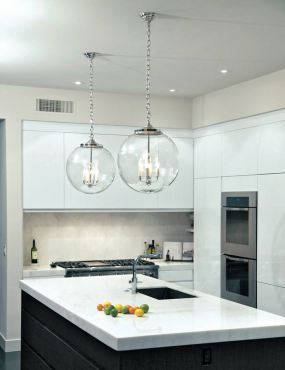
• Wall mounted: Fixtures are mounted onto or close to a wall. Wall sconces, light bars and accent lights are all examples. Wall sconces in a hall provide general lighting while wall sconces in a bathroom typically provide task lighting for shaving and applying makeup. A bar light in a bathroom can provide either general or task lighting depending on the number of lights in the bar, the wattage rating of the fixture and the height above the counter at which it is mounted. Accent wall lights are designed to spotlight a specific item such as works of art or collectibles.
• Pendant and chandeliers: Pendants and chandeliers are typically mounted to a ceiling and hang down a specified length over a dining table, countertop or coffee table and in a foyer. They are intended to provide general lighting but may also provide task lighting, such as for reading or meal preparation, as long as the wattage for the fixture is sufficient. This category of lighting also lends itself to being highly decorative, creating a design statement.
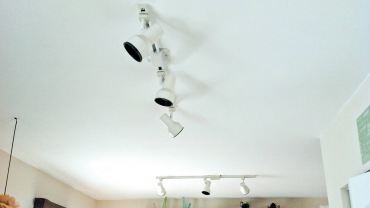
• Track or cable and rail lighting: Track or cable and rail lighting may be used for general, task or accent lighting. Either may be mounted on a ceiling or on a wall. With track lighting, individual heads are mounted in a line voltage track, which itself is mounted flush to a wall or ceiling with a single electrical junction box. The heads may come in a variety of styles but typically have a somewhat “commercial” appearance. Low-voltage cable and rail lighting is hung by cables from a ceiling or mounted with stand-offs. Rails are powered by either surface-mounted transformers or wired to remote transformers, as opposed to a standard junction box. Cable and rail leans toward contemporary in style and is very flexible in that you can attach a wide variety of heads, along with a wide variety of pendants (many of which are interchangeable between multiple manufacturers) anywhere you want along the rail. Rails can also be configured in a variety of shapes and lengths, adding to their flexibility. The only limitation is the allowable wattage of the transformer.
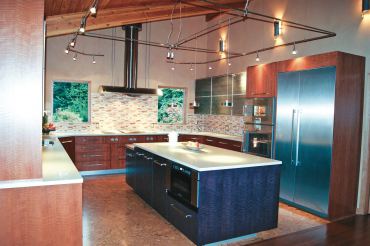
• Floor or table lamps: Floor and table lamps provide general and targeted task lighting, such as reading light for a chair. Floor and table lamps can augment a room’s décor with regards to both style and finish. Consider switching table and floor lamps from a switch on the wall to make lighting more accessible.
• Accent lighting: The purpose of accent lighting is to illuminate specific objects such as art or collectibles. Accent lighting comes in a variety of configurations such as recessed can “eyeballs,” tracks and rails, as well as individual line and low-voltage fixtures. Under-cabinet, in-cabinet, soffit and toe-kick lighting is sometimes considered to be accent lighting due to its ability to illuminate specific features of a room, such as a tile backsplash in a kitchen or the stair treads in a living room.
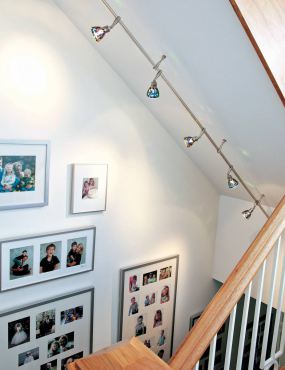
• Wet-rated lighting: Wet- or damp-rated lighting can be found both inside and outside a home. It is important to select fixtures for over a bathtub or in a shower that are wet-rated to ensure a long, safe life for the fixture. (Note: Chandeliers over bathtubs are very popular these days; however, there are very specific electrical codes that address the ability to install these fixtures over a bathtub — check with a licensed electrician before purchasing and installing).This principle also applies to exterior lighting. Whether under cover or not, light fixtures that are to be installed out of doors need to be rated for a wet environment to minimize corrosion of contacts and the fixture’s housing. The category of wet-rated lighting also includes landscape lighting. Incorporating lights into your landscaping can have multiple benefits, including increased safety, reduced thefts and burglaries, as well as enhanced enjoyment of your outdoor environments, whether you are inside or out.
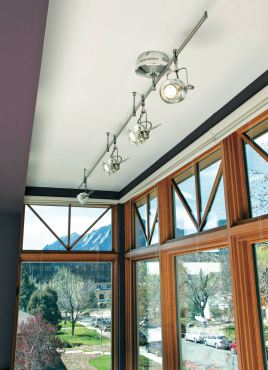
When selecting any type of fixture, it is important to consider the size of the fixture (width, height, number of bulbs); the type of light bulb (referred to as a lamp by professionals) and all its related characteristics such as lamp base, watts/lumens, Kelvin and CRI; the recommended wattage for the fixture; the available finishes for the fixture and whether the fixture has a “family” (a collection of complementary fixtures).
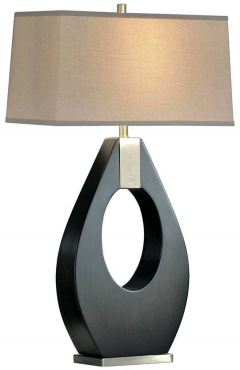
According to Debbie Page of CSW Electric & HVAC, “the most common oversight homeowners make, when selecting lighting, is the size of a fixture relative to the size of the room and the actual light output compared to the desired light output.” One solution is to mock up the general dimensions of a perspective fixture and “hang” it in the general location under consideration to determine if the size is in scale with the space it is intended for.
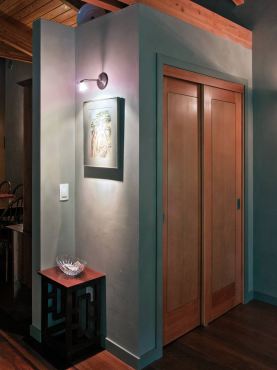
There are basically three types of bulbs: incandescent, fluorescent and LED (light emitting diodes), with variations within each category. All of these bulbs possess common characteristics such as the lamp base — some are referred to as Edison or screw-in bases while others have pin bases. Pin bases allow for smaller, shallower housing and tend to be found in more “architectural” lighting. All bulbs are labeled for their watts, a measure of energy conversion into light and, more recently, their lumens, a measure of brightness.
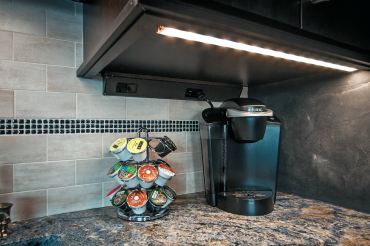
It is no longer true that the higher the wattage, the greater the brightness. For example, a 5-watt LED bulb and a 40-watt incandescent bulb have roughly an equal number of lumens (brightness), or 450, but use a considerably different amount of energy (watts) to produce the same amount of brightness. If you want the brightness of a 100-watt incandescent bulb but the low energy (wattage) consumption of an LED or fluorescent, then look for a bulb that provides approximately 1,600 lumens.
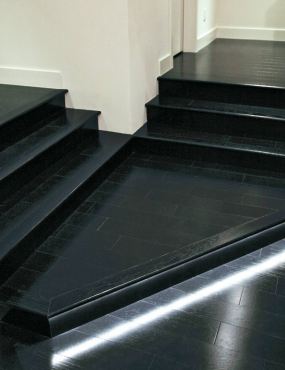
Another commonly measured characteristic of bulbs is Kelvin. Kelvin is a measure of a light’s temperature in thousands. A high Kelvin such as 4,000-plus is typical for industrial-grade fluorescent bulbs and the LED bulbs of yesteryear. The higher the Kelvin number, the more “blue” the light appears, similar to sunlight.
Most people prefer a Kelvin between 2,500-3,500 for the fixture bulbs in their homes. This temperature range gives good color rendering while being neither sterile (like the high Kelvin fluorescent bulbs) nor too orange, as with a low Kelvin period Edison bulb.
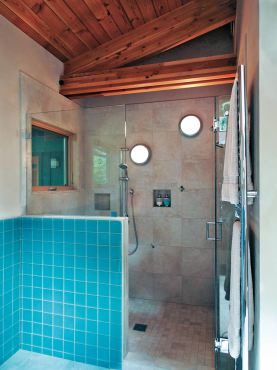
CRI, or color rendering index, is another bulb characteristic that measures a bulb’s ability to accurately read the color of an illuminated object. This measure has somewhat fallen out of vogue and is no longer regularly included on bulb packaging. If this information is available, a good CRI range is between 80 and 100.
Incandescent bulbs, such as the common A-bulb, come in a 40, 60, 75, 100 and 150 (three way) watt variety. Incandescent bulbs can be either line voltage or low voltage, such as halogen, and are dimmable. Regardless of the voltage, they have the shortest life span and lowest cost, and are the least energy-efficient type of bulb available, which is why they are being phased out of production by federal mandate.
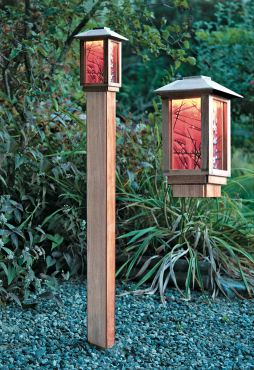
Fluorescent bulbs come in two basic flavors — pin-based tubes and screw-based compacts. The fluorescent bulbs (and, more accurately, the fixtures) historically were of low quality, had a delayed start and often times flickered, causing eye strain or headaches for some people. Fluorescents run cooler and use less energy than incandescent bulbs but contain mercury, which is a harmful substance if not disposed of properly.
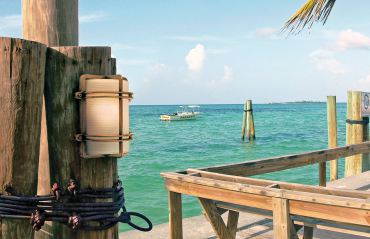
The big difference between fluorescent and LED bulbs is cost. LED bulbs are relatively new to the market but have come a long way in a short amount of time with regards to quality, color, Kelvin and cost. LEDs are low voltage but some bulbs have the driver (the mechanism that drops the voltage from line to low) built into the base of the bulb while others, such as LED under-cabinet lights, have an accessory driver that drops the voltage. LED bulbs have become popular, in part, due to the fact that they have most of the attributes of fluorescent bulbs with fewer drawbacks.
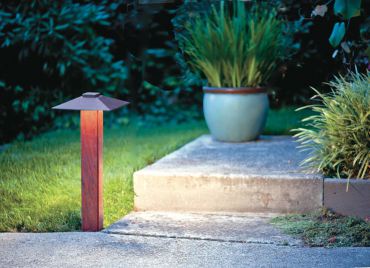

It is important to consider the manufacturer’s maximum recommended wattage for a fixture before purchasing to ensure the fixture will provide the necessary light output for its intended use. Never install bulbs that are a higher wattage than that recommend by the fixture’s manufacturer. This could lead to overheating and a potential house fire.
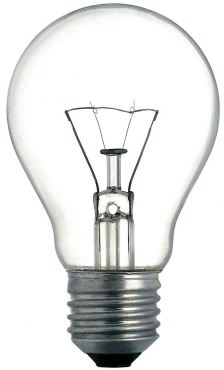
Additionally, consider not only if the style of the fixture is compatible with the room it is intended for but that the finish is too. Many fixtures are offered in multiple finishes. It pays to inquire what finishes are available so you can render just the right look. Depending on how extensive your lighting project is, you might want to consider a variety of fixtures in the same style and finish, referred to as a family. You can find families consisting of chandeliers, pendants, wall sconces and more. Manufacturers such as Kichler, Progress, Seagull, Murray Feis, Hubbarton Forge and others are known for their lighting families.
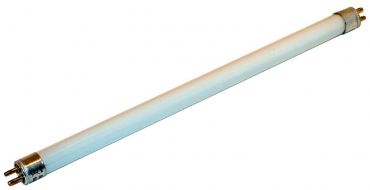
Lastly, make the most of your lighting by including a variety of lighting controls. The controls can improve your safety and reduce your energy bills when used to dim your lights, turn on your lights when you are not home, turn off your lights (motion sensors) when you forget to, as well as phase down lights so that you can exit a room in comfort and safety. Preset lighting “scenes” can be created with lighting controls so that light levels in any given room can be programmed for specific tasks. For example, in a kitchen, you can program one scene for cleanup or prep that utilizes all the lights in the room and another scene that may only utilize the under-cabinet lighting for a low-light dining scene. (Note: Lighting controls need to be selected based on their compatibility with the types of bulbs being used. Conversely, make sure that the bulbs you choose are, in fact, dimmable, because many are not.)
In the Pacific Northwest, where winter days can be short and natural light levels low, it is good to know that you can chase away the gloom with a simple lighting plan and a few strategically selected light fixtures. Now if you could only control the rain that easily, life would really be good!





























